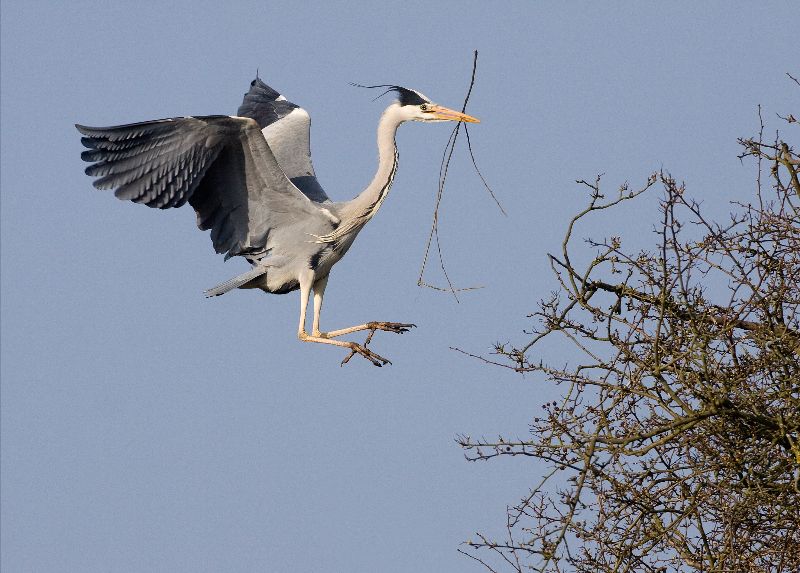UK’s longest running bird survey hit by Covid-19

Breeding numbers of Grey Herons have been continuously monitored by the British Trust for Ornithology (BTO) since 1928, making this the longest data set of any British bird. Covid-19 restrictions imposed during spring 2020 meant that many surveyors were unable to visit occupied heronries across the UK, causing a break in this long-term study.
The year 2020 will be remembered for the impact of Covid-19 on all aspects of our lives and sadly for the much more personal impact the virus has had on many families. The BTO’s Heronries Census did not escape the effects of Covid-19, even though the first lockdown in late March 2020 came into effect at a time when some Heronries Census volunteers had already completed one or more visits to the breeding colonies. The first lockdown meant visits could not be carried out in 2020 during the key survey period in April.
Information was received from 485 sites, the lowest number visited since 2001, when survey coverage was disrupted by the Foot and Mouth disease outbreak. A total of 3,224 apparently occupied nests were counted in 2020, around half the number recorded in 2019. The historical Census results show that severe weather can impact on heron numbers so it will be interesting to see how the cold snap in February 2021 affected them.
Although the 2021 Heronries Census is going ahead (as things stand), survey coverage is again likely to be reduced due to Covid-19 and the ongoing lockdown rules across the UK. We may therefore have to wait until the early spring of 2022, when our Grey Herons will again be back at their heronries, before we can get a full picture covering the majority of UK heronries.
Ian Woodward, Heronries Census Organiser at the BTO, said, “The 2018 ‘Beast from the East’ showed a relatively minor effect on our herons, at least when compared to winters in the past with much more prolonged severe weather. If sufficient survey visits are able to take place in 2021, we would expect the effects of the February cold snap to be noticeable in our trend data but also relatively minor. It is thanks to the ongoing commitment of our volunteers that we have such a fantastic long-term dataset charting the ups and downs of this enigmatic bird.”




